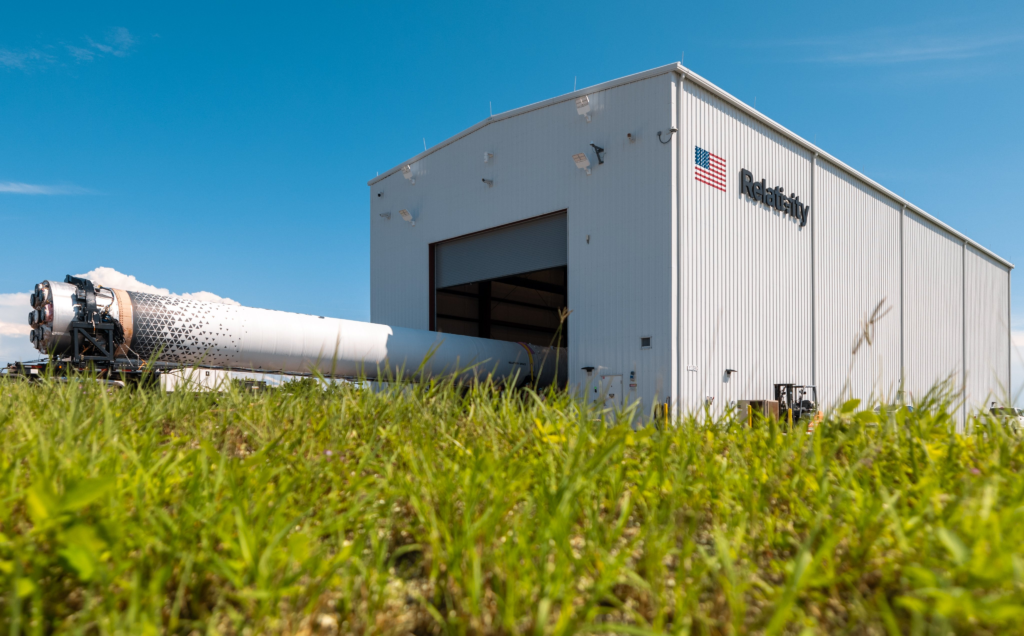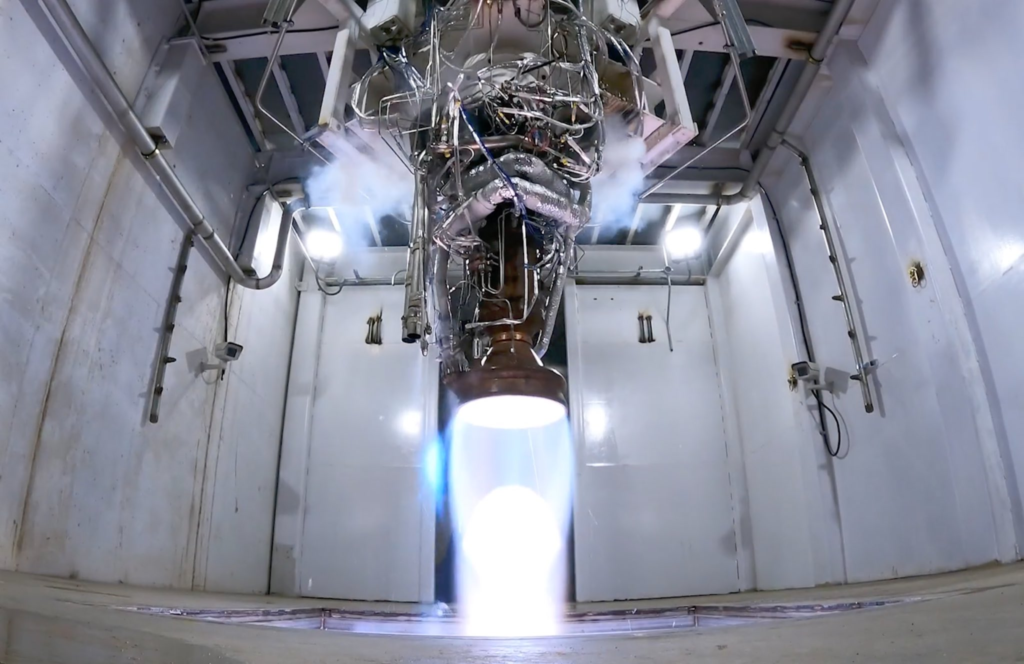
Relativity Space Is Almost Ready To Launch For The First Time
Whether it’s the first launch of a specific rocket, the first for a company, or even both, there is a lot of anticipation and excitement surrounding that mission. Recently we watched Firefly Aerospace manage to successfully reach orbit for the first time on their second test flight of Alpha. Now, Relativity Space is closer than ever to the first launch of Terran 1.
Currently, Relativity has been very busy as they finish some of the final tests in preparation for the first launch of their entirely 3D printed rocket. After a short stall due to Hurricane Ian, the company is now back at full speed with a small checklist of things to complete prior to launch. Specifically, this list includes stage integration, static fire, and finally, the mission itself.
One of the reasons this upcoming launch is such a big deal has to do with the fact that Relativity is attempting a completely unique manufacturing approach. Not to mention Terran 1 is a liquid oxygen and liquid natural gas or methane filled rocket, another unique aspect that will soon be put to the test. Here I will go more in-depth into what Relativity has been working on, the final tests necessary, when we should expect the first launch, and more.
Recent Progress

Just over a week ago on September 27th, relativity prepared for Hurricane Ian and transported the first stage from the pad back to shelter. At the time, this same first stage had just completed an 82 second hot fire which reportedly went extremely well. A few days after the hurricane had passed, Relativity made it clear that upon returning to the site, they noted no major issues and planned to be back to nominal operations by Monday. Just two days ago on October 3rd they tweeted saying, “It’s time. Today we’ve resumed ops at the pad and are excited to share that we’re proceeding on to integration of Terran 1 ahead of static fire. We’ve gathered great data and are confident of the lessons learned as we prepare to launch the world’s first 3D printed rocket.” While the launch was originally intended to happen during the summer, they are now targeting a mission by the end of the year.
In terms of what Relativity still needs to do before launch, they tweeted a checklist highlighting, “Who doesn’t start their week with a new to-do list? Integration, Static fire, Make history.” It’s clear based off this along with everything they have done in the past few months, that Terran 1 is genuinely close to launching for the first time. One of the reasons Relativity is only a few tests away, has to do with the success of practically the entire pre launch campaign. So far they have managed to successfully apply flight-like loads to all primary structures of Stage 1 and Stage 2. They functionally tested and qualified all stage separation hardware and flight-critical mechanisms. Lastly, they completed the qualification of all primary pressurized and unpressurized structures. Stage 1 alone has managed 6 ignitions & 185s+ of hot fire for all 9 Aeon 1 engines. Throughout these tests, no engine swaps needed, and engines & autogenous press performed great.
In relation to the ground campaign, CEO of Relativity, Tim Ellis tweeted mentioning, “Our test campaign on the ground was robust, and we pioneered new ground with 3D printed rockets, methane propulsion, autogenous press systems, a new avionics design, and more. Hardware data is promising for #GLHF. The only way we’ll learn more at this point is by flying!” Officially, Relativity is scheduled for its first launch of Terran 1, called “GLHF” (Good Luck, Have Fun), from Launch Complex 16 (LC-16) in Cape Canaveral in 2022. This launch of Terran 1 is the first orbital attempt by Relativity and will not include a customer payload. As a two-stage, 110ft. tall, 7.5 ft. wide, expendable rocket, Terran 1 is the largest 3D printed object to exist and to attempt orbital flight. Working towards its goal of being 95% 3D printed, Relativity’s first Terran 1 vehicle is 85% 3D printed by mass. Terran 1 has nine Aeon engines on its first stage, and one Aeon Vac on its second stage.
Like its structure, all Relativity engines are entirely 3D printed, and use liquid oxygen (LOX) and liquid natural gas (LNG), which are not only one of the best for rocket propulsion, but also for reusability, and the easiest to eventually transition to methane on Mars, a future goal of Relativity. As one of the few LOX/LNG fueled rockets in the industry, Terran 1 is racing to be the first LOX/LNG rocket to fly. Looking at some other next generation launch vehicles using methane, Terran 1 has a good opportunity to be the first.
Terran 1 Overview & Future

Now that we know more about some of Relativity Space’s recent progress, and the final tasks they need to complete before launch, we can take a closer look at the rocket itself, and what to expect going forward. Terran 1 is designed for the future of constellation deployment and resupply. Its software-driven architecture is meant to be capable of accommodating satellite customers’ evolving needs, while also providing the most agile and affordable launch service on the market. Designed and printed in the USA, Relativity believes Terran 1 is the most innovative product to emerge from the aerospace manufacturing industry since the dawn of the privatization of space 20 years ago.
While this is quite the confident statement, the company has a lot going for it in the form of ambitious additions to the launch vehicle. One of the main aspects being the manufacturing process. As I mentioned prior, the first flight vehicle is 85% 3D printed and the future goal is 95%. All of which has to do with Relativity’s proprietary Factory of the Future. This factory centers on Stargate, the world’s largest metal 3D printers, that create Terran 1, and Terran R, from raw material to flight in 60 days. Relativity’s Stargate printers’ patented technology is trying to enable an entirely new value chain and innovative structural designs that make Terran 1 and Terran R possible. By developing its Factory of the Future and rockets together, Relativity accelerates its ability to improve design, production, quality, and speed. In order to make this unique process work for rockets, Relativity developed multiple proprietary alloys custom designed for 3D printing to meet mission-critical performance. When it comes to launch vehicle structures, there often is a push and pull between weight and strength. Not to mention additional factors like cost, speed to manufacture, and more.
For more than half a century, aerospace manufacturing has relied on large factories, fixed tooling, complex supply chains, and extensive manual labor to build costly rockets comprised of 100,000+ parts in 2 years or longer. Throughout the space industry, we are seeing a few different companies trying to change this. Relativity for example is trying to accelerate innovation in the industry. Specifically, the company built a factory with this in mind, vertically integrating intelligent robotics, software, and data-driven 3D printing technology. Incorporating Stargate, the world’s largest metal 3D printer with AI-driven controls, their Factory of the Future continuously optimizes production, resulting in greatly compounded quality and time improvements, lower costs, and product designs previously not possible.
In the last few weeks, we have seen a lot of action from Terran 1’s Aeon engines. These engines are designed, assembled, and tested in house. Except for the second-stage nozzle extension, each of Terran 1’s 10 engines is based on a common design, helping enable simplified and repeatable manufacturing and acceptance testing. Aeon engines are fueled by liquid natural gas and liquid oxygen and operate using the gas generator engine cycle. Each engine uses two turbopump assemblies for thrust and mixture ratio control: one for liquid natural gas and one for liquid oxygen. The thrust chamber is regeneratively cooled with liquid natural gas, which is then injected into the main combustion chamber and burned with liquid oxygen to produce the required thrust. On the first stage, Terran 1 autogeneously pressurizes the tanks with gaseous natural gas and gaseous oxygen via heat exchangers integrated into the Aeon-1 engines, eliminating the need for a separate pressurization system and avoiding the use of helium on the vehicle entirely. Electromechanical actuators gimbal the outer 8 engines, providing thrust vector control. The stage separation system is located at the forward end of the interstage and interfaces with the second stage. Combine this with a single Aeon Vacuum engine that powers the second stage with up to 28,300 lbf-vac using a fixed 165:1 expansion nozzle, capable of multiple restarts including provisions for a deorbit burn. All of which combine to create Terran 1, a unique rocket we can expect to watch lift off for the first time in likely a month or so.
Conclusion
Relativity Space has been making impressive progress ahead of the Good Luck Have Fun mission. After a long list of successful tests, the company is only two major steps away from launch. This includes final stage integration, one more static fire, then they are ready. If successful, this mission will also show off the possibilities of 3D printing, using methane as a propellant, and more. We will have to wait and see how it progresses and the impact it has on the space industry.
